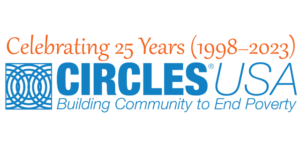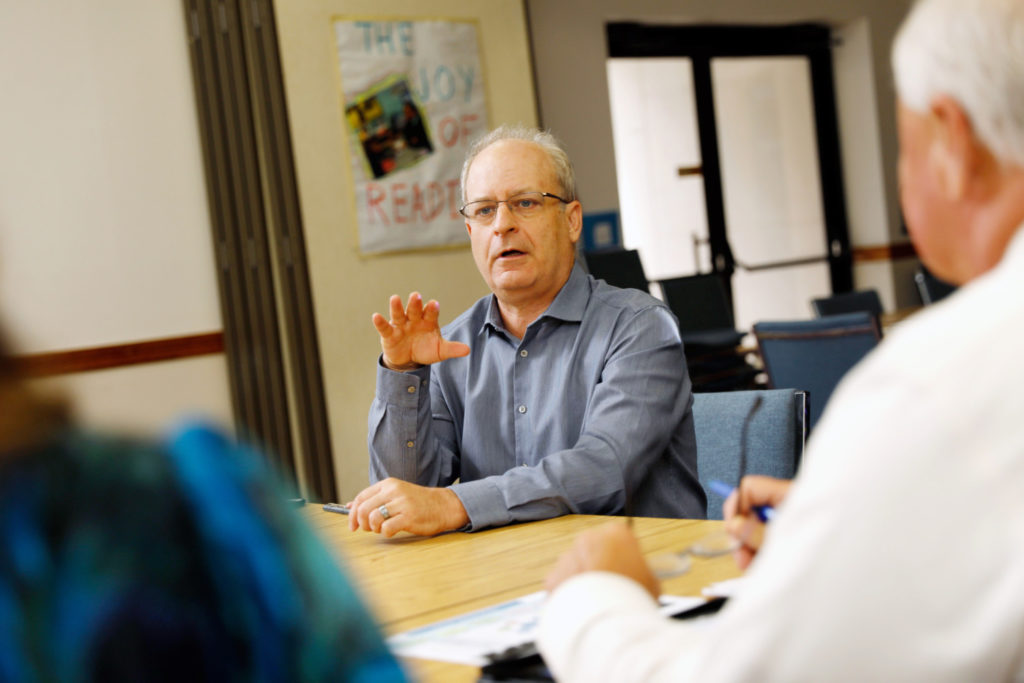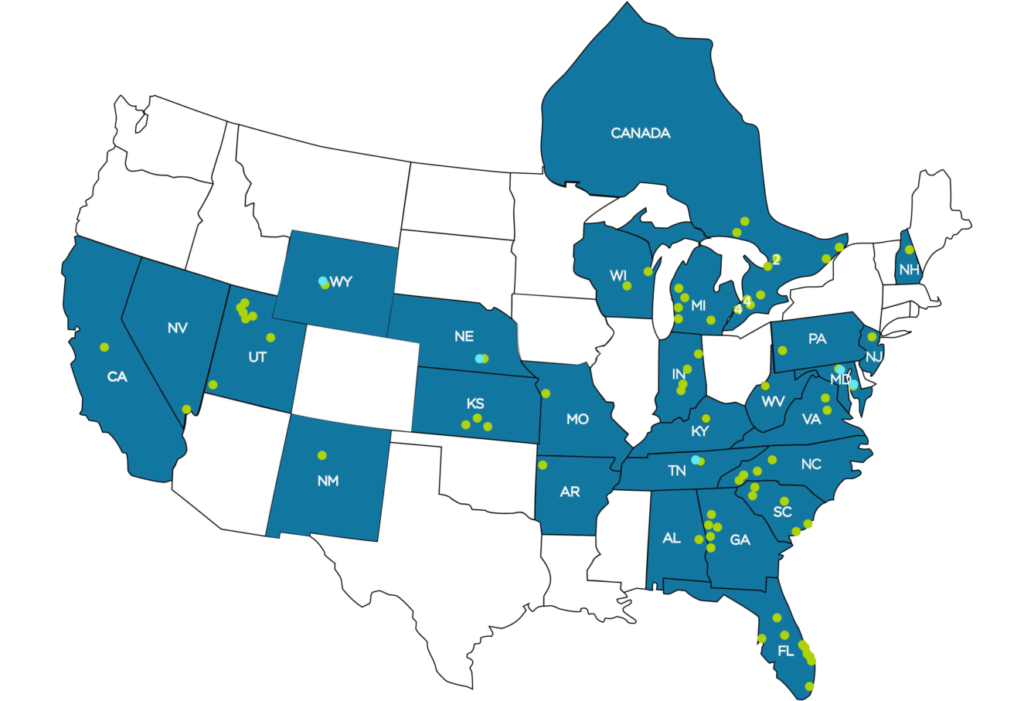
As Circles USA approaches its quarter-century milestone, we’re reflecting on the evolution of our core value: that building community is the surest way to support families working to get out, and stay out, of poverty. This blog series will be updated throughout this 25th Anniversary year to celebrate, illuminate, and look forward to the many challenges and rewards CUSA’s next era will bring.
A BRIEF HISTORY OF CIRCLES USA
The Circles model has several components that evolved largely through the leadership of Scott C. Miller (CEO and Founder of Circles USA) and many other collaborators. Though these thought partners, scholars, and leaders are too many to list, here is a short retrospective highlighting key relationships and events in CUSA’s journey from a seedling venture to a thriving community of practice.
From 1983-88, Scott Miller initiated a 23-county learning network of more than 500 organizations in Northeast Ohio to better coordinate safety-net programs and pilot new self-sufficiency programs to help people out of poverty. The George Gund Foundation, The Cleveland Foundation, and The GAR Foundation provided initial funding.
|
|
1988-91 saw a $1.72M funding influx from over 40 community foundations, government agencies and United Way chapters. Miller and team piloted a self-sufficiency model known as Family Development in Cleveland, Akron, Columbus, Canton, and Cincinnati. Family Development was designed by Mid-Iowa Community Action, Inc.
1992-2005 marked several major development benchmarks. The Annie E. Casey Foundation funded Mid-Iowa Community Action (MICA), the original designers of the Family Development model, to build robust collaborations between government, education, and social service agencies to produce better outcomes for low-income children and their families. Miller joined MICA in January of 1992 to continue supporting Family Development efforts across the nation and to develop higher-impact self-sufficiency models. The Casey investment provided the ability to research and learn from projects across the country that would eventually lead to the design of Circles. A pilot called Beyond Welfare was built in Ames, Ohio beginning in 1996.
In 1998, Miller and colleagues founded Move the Mountain Leadership Center, Inc.: the lead organization launching a poverty alleviation program that would eventually become Circles USA. For this reason, ‘98 is hailed as CUSA’s founding date.
“[I]n my early job experience serving people struggling in poverty, I realized how often people seemed alone with their problems,” Miller wrote in his 2019 book Transformational Leadership: A Framework to End Poverty. “So I created support groups as a response to such isolation. …Circles USA was the result of an intense soul-searching process that I began in the mid-1990s. Circles is a process of surrounding yourself with people who will be Allies as you make an important change, such as moving out of poverty.”
By 2000, “Circles” was coined for the community engagement work that Beyond Welfare was pioneering. Miller’s collaborations with poverty alleviation specialists in higher ed and nonprofits—notably Stephen Aigner, Ph.D., Senior Fellow with the North Central Regional Center for Rural Development and Associate Professor of Sociology, Iowa State University; Leslie Bloom, Ph.D. Assistant Professor of Education, Iowa State University; and Lois Smidt, an employee of Mid-Iowa Community Action—introduced many community building tools that remain a part of the Circles model today. Tools drawn from Smidt’s work with the Reevaluation Counseling movement included: New and Goods, Appreciations, Listening Pairs, and Understanding Class Differences.
Between 2006-2016, Scott Miller and Michelle Clark, Ph.D. refined the early training manuals, the process for transferring programs to new communities, collection of network-wide data, and creating sustainability for early models. Clark did a literature review on Social Capital.
“The mission of Circles is to build relationships across race and socioeconomic class lines in order to realize more positive life outcomes for families living in poverty. By establishing a broader base of middle and upper middle class citizens who are close to people in poverty, people in poverty begin to access broader networks to support their own self-sufficiency, and social and public policy becomes more enlightened. Thus, Circles is a high impact program whose core strategies are designed to enhance the social capital of low-income people while energizing the community into action.” —Michelle Clark, Ph.D

In 2007, Miller and Clark forged a partnership with Phil DeVol and the Bridges Out of Poverty network. DeVol’s Getting Ahead in a Just Getting By World was integrated into the Circles model to provide a structured class before matching Circles Leaders with Allies.
The decade spanning 2013-2023 has seen Circles USA embrace change and reorganization at the national level. In 2013, Circles USA received an award from the University of Michigan Ross Business School that would provide four full-time MBA students in a seven-week study of Circles. The purpose of the research was to provide recommendations for stabilizing and expanding Circles. The team solicited input from Circles staff, Circles USA board members, and the National Leadership Team. They also researched best practices of long-standing and successful national nonprofit associations to determine their recommendations for Circles.
The report was reviewed by two separate business consultants who volunteered to refine the recommendations and offer opinions on what next steps should be. Surveys were collected from 46 Circles coaches and coordinators, which was 41% of the 111 total Circles staff in the network at that time. Based on recommendations from the University of Michigan team and our Board, Circles USA prepared a capacity building proposal to the Walmart Foundation and received $500,000 to enhance training curriculum, database and communication systems, and organizational development changes. This period saw a shift away from chapter “advisory councils” and towards today’s Resource Team model, bringing a volunteer-centered approach and more sustainable and dynamic expression of the Circles model.
Also in this period, CUSA Board Chair Joan Kuriansky authored a policy platform addressing six key issues our chapters flagged as high priority for poverty alleviation, including quality jobs, the “cliff effect” (a phenomenon which occurs when a pay raise at work triggers a disproportionate loss of government assistance), broadband access, healthcare, housing, and transportation. It also emphasizes Circles USA’s commitment to addressing the structural bi
ases that unjustly affect people of color and other historically marginalized communities.
 Today, Circles USA comprises more than 76 communities. In the United States, our presence spans 23 states, 49 counties, and 20 cities with populations of 100,000. There are 16 Circles locations in Ontario, Canada.
Today, Circles USA comprises more than 76 communities. In the United States, our presence spans 23 states, 49 counties, and 20 cities with populations of 100,000. There are 16 Circles locations in Ontario, Canada.
Circles USA and the Circles model are continuously evolving as the membership grows and develops more effective approaches to supporting families out of poverty while addressing systemic barriers to self-sufficiency.
“In 2023, we’re deepening and expanding our model. 25 years is barely enough to make a dent in the economic hardships many Americans face—yet I’m proud of how far our network has come in this time. Circles USA is growing our reach and our impact to create significant changes across the country as we continue building community to end poverty.” —Kamatara Johnson, Executive Director, Circles USA
To find a local chapter or learn how Circles USA can make a difference in your community, visit https://www.circlesusa.org or contact gena@circlesusa.org.